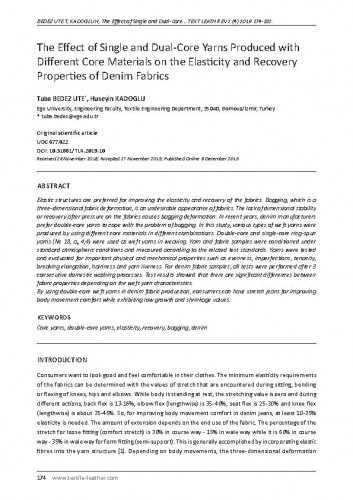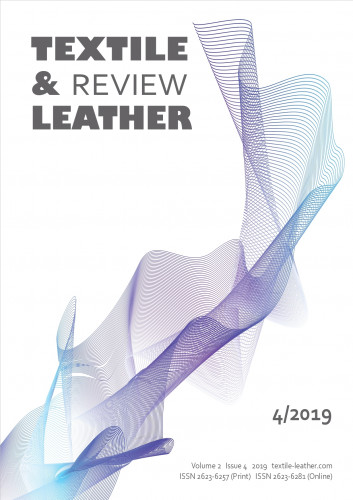Elastic structures are preferred for improving the elasticity and recovery of the fabrics. Bagging, which is a three-dimensional fabric deformation, is an undesirable appearance of fabrics. The lack of dimensional stability or recovery after pressure on the fabrics causes bagging deformation. In recent years, denim manufacturers prefer double-core yarns to cope with the problem of bagging. In this study, various types of weft yarns were produced by using different core materials in different combinations. Double-core and single-core ring-spun yarns (Ne 18, ae 4,4) were used as weft yarns in weaving. Yarn and fabric samples were conditioned under standard atmospheric conditions and measured according to the related test standards. Yarns were tested and evaluated for important physical and mechanical properties such as evenness, imperfections, tenacity, breaking elongation, hairiness and yarn liveness. For denim fabric samples, all tests were performed after 3 consecutive domestic washing processes. Test results showed that there are significant differences between fabric properties depending on the weft yarn characteristics. By using double-core weft yarns in denim fabric production, consumers can have stretch jeans for improving body movement comfort while exhibiting low growth and shrinkage values.
Sažetak

 Textile & leather review : 2,4(2019) / editor-in-chief Dragana Kopitar.
Textile & leather review : 2,4(2019) / editor-in-chief Dragana Kopitar.